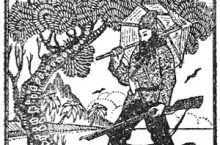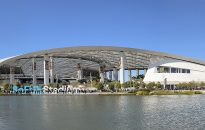WINDHOEK, NAMIBIA — The newly inaugurated president of Namibia is outlining the agenda for her upcoming term, with one of her key goals being the abolition of the red line, a legacy of Namibia’s colonial past that segregates the nation and limits the transport of agricultural goods, particularly beef, between the northern and southern regions. […]


The newly inaugurated president of Namibia is outlining the agenda for her upcoming term, with one of her key goals being the abolition of the red line, a legacy of Namibia’s colonial past that segregates the nation and limits the transport of agricultural goods, particularly beef, between the northern and southern regions.
The emergence of cattle disease in the 1890s led the colonial German authorities in Namibia to restrict the movement of livestock between the north and south.
This policy persisted throughout the South African governance period. In the 1960s, officials constructed a barrier stretching approximately 1,000 kilometers across the country. While individuals can cross the fence without restriction, they are prohibited from transporting agricultural items like beef, fruits, and vegetables.
The AR Movement, a political faction that secured third place in the recent National Assembly elections, is taking legal action against the state, aiming to compel the removal of the fence colloquially known as the red line.
The party claims that the government has upheld this barrier to the economic detriment of Namibia’s predominantly black populace, which resides largely in the north.
George Kambala, a legislator from the AR Movement, told VOA that the party’s campaign advocating for the abolition of the red line struck a chord with voters in the northern region.
“Three feasibility studies have been conducted regarding the red line, and all three advocate for its removal,” he stated. “Eliminating the red line would allow the agricultural sector to contribute three times its current economic input.”
Beef stands as one of Namibia’s primary exports. As of January 2024, 42% of Namibia’s beef exports were directed to the European Union. However, this beef is exclusively sourced from areas south of the red line.
In response to inquiries from VOA during a press conference on Thursday, Namibia’s president-elect, Netumbo Nandi-Ndaitwah, mentioned that the removal of the red line was agreed upon at the nation’s second land conference six years prior.
She remarked that the AR Movement is using this issue for political gain.
“It has potential economic ramifications, and that’s why as a government, we have devised a plan on how to progressively… and we have already begun… to address this,” she noted.
Currently, no specific timeline exists for the removal of the red line.
Former Prime Minister Nahas Angula — who is also a commercial farmer in southern Namibia — indicated that the complexities of removing the red line are heightened by the fact that some northern Namibian farmers sometimes take their cattle to graze in Angola.
He pointed out that, although the red line is a remnant of colonial history, it still serves to reassure the European market that beef from Namibia is free from foot and mouth disease, which sporadically occurs in certain northern regions.
“Northern Namibia is densely populated, and some farmers venture into Angola to graze their cattle,” Angula said. “Therefore, if you aim to open borders — to remove the red line — collaboration with Angola is essential to ensure that vaccinations are administered there… ensuring that all animals are adequately vaccinated regularly.”
“It is indeed a complicated situation,” he concluded.
Hearings regarding the AR Movement’s lawsuit to eliminate the red line are set to commence on January 21 and are anticipated to continue for 10 days. Given the case’s complexity, judges may take several months to reach a decision.














